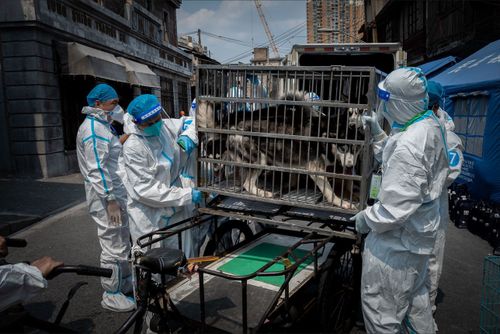
A shocking video of a Rottweiler mauling a two-year-old girl in China has prompted a crackdown by local authorities on stray dogs that some argue has now gone too far.
Authorities were initially praised for their swift response to the incident, but netizens soon began sharing accounts of stray canines in their neighborhood being roughly rounded up and, in some cases, put down.
The new directive to clamp down on large, unleashed dogs is being cited as the latest example of a knee-jerk reaction by Chinese authorities that also highlights the country’s long-standing struggle with animal rights and welfare.
“Just because a large dog bit a child, all of them are being hunted down by ruthless security guards and police,” one user wrote on Chinese social media Weibo under the hashtag “Will the biting of the girl bring stigma to a large dog?” viewed by almost 1 million users.
“Such a one-size-fits-all approach makes me really sad,” she said.
Video of the October 16 attack shows the girl stepping out of a residential compound with her mother in Chongzhou, in China’s southwestern province of Sichuan, and immediately being chased and bitten by a large black Rottweiler.
The mother tries to shield her daughter from the dog, but then tries to pull her back as the animal drags the child around.
A cleaner who comes to help with a broom also fails to drive the dog away.
A man finally succeeds in chasing the Rottweiler away with a wooden stick.
By that time, the mother is sitting on the ground, crying, with her daughter in her arms.

Calls to add Rottweilers to list of banned dogs after string of attacks
The toddler was admitted to hospital, where she was treated for a ruptured kidney, fractured ribs and bite marks on various parts of her body, several Chinese state media outlets reported.
Authorities caught the Rottweiler and detained its owner, according to state media.
Since then, local authorities in a raft of provinces including Shandong, Jiangxi, Yunnan, Hunan, Anhui have stepped up law enforcement, some more heavy-handed than others.
Stray dogs are the main targets, but pets who are unleashed can also be subject to control measures.
Most local police said they would ramp up patrols to round up stray dogs and fine owners who fail to put their dogs on a leash.
More robust approaches include police in Yanzhou in Shandong vowing to hunt down “mad dogs” and euthanize them.
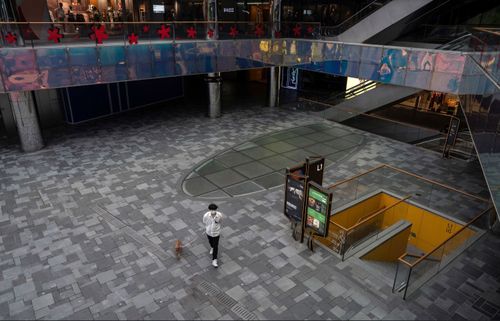
The country is home to 40 million stray dogs, according to the 2021 China Pet Industry white paper.
In the past, strays have been blamed for rabies outbreaks and authorities have attempted to control their numbers with culls.
In one case that triggered an outpouring of grief online, a small stray dog – known as Xiao Huang, or little yellow – was taken away in a net by security personnel at a university campus in Chongqing and beaten to death, according to state-affiliated media.
Many netizens were perplexed by the decision to kill a tiny dog, whose image is being shared on Weibo with the hashtag “straydogxiaohuang,” with a call for greater rights for stray dogs.
The university said the canine had entered the student dormitory, posing a threat to the safety, according to state-affiliated news outlet Beijing Time.
In Shanghai, images of police officers descending on a local neighborhood and dragging away a German Shepherd also sparked fury online.
Many netizens believe the dog was old and did not pose a danger to the community.
But Shanghai authorities said they were acting on complaints from neighbors about an aggressive dog and that it was “taken in and dealt with,” according to a post on their WeChat account.
This is not the first time Chinese authorities have been accused of being heavy-handed with animals.
During Covid, some pet owners complained that their dogs were beaten to death when they were taken away for quarantine, anecdotes that sparked uproar across the internet.
A number of netizens praised the authorities for taking proactive steps, but most warned against the consequences of going overboard.
Celebrities also joined the chorus of animal lovers to call for better understanding.
Chinese actress and singer Cya Liu, who won Best Actress at the Hong Kong Film Awards last year, called for an end to the killing.
“Not all stray dogs are bad just as not all men are good,” she wrote on Weibo, with the hashtag “voicing out for stray dogs.”
Bo Ai Animal Protection Centre Of Guangyuan in Sichuan wrote on Tumblr-like Chinese social media Meipian that China should be using its development to instill a better sense of social responsibility and a respect for animals in people.
“Beating and catching dogs at every turn. Let the world see what our great motherland is like,” it said.
“Homeless but Not Alone: Dog’s Devotion to Owner Warms Hearts Amidst Difficult Circumstances”
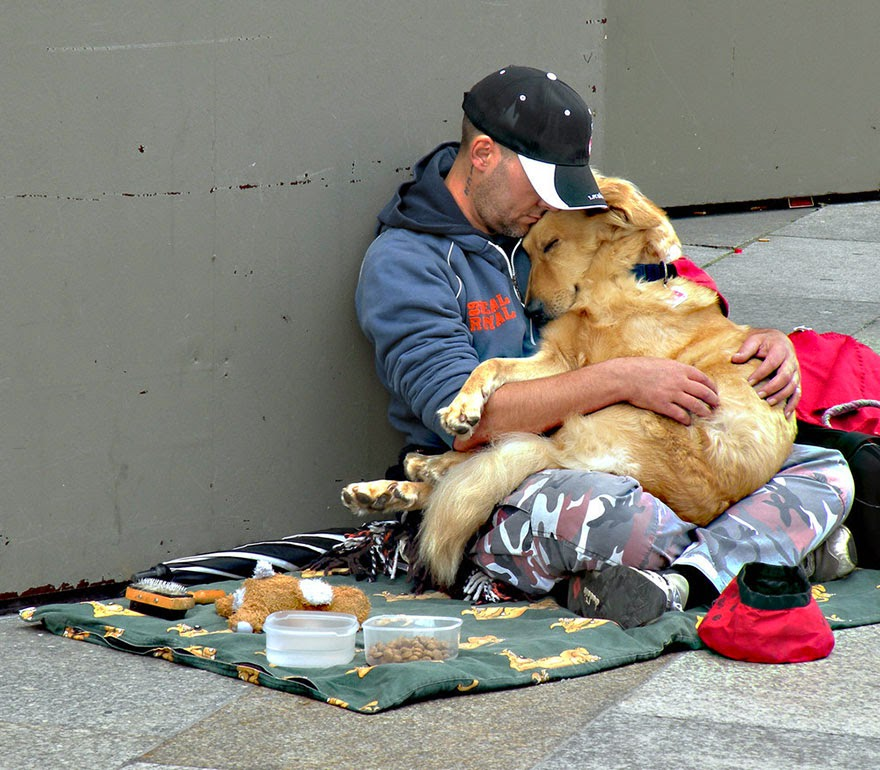
In the bustling heart of the city, where the rhythm of life beats loudly and the struggles of the less fortunate are often drowned out by the urban cacophony, there exists an extraordinary bond between a homeless man and his faithful canine companion, a bond that has touched the hearts of millions.
Meet Jack, a man who fell through the cracks of society, finding himself without a home, without comfort, and without hope. His days were filled with uncertainty, and his nights were spent seeking refuge wherever he could find it. But amidst the harsh realities of life on the streets, there was one constant source of solace and unwavering love – his loyal dog, Buddy.
Buddy, a scrappy yet endearing mixed breed, became Jack’s lifeline in the sea of despair. Their story was not just one of a man and his pet; it was a testament to the transformative power of companionship and unconditional love. Despite the dire circumstances they faced, Buddy remained by Jack’s side, offering him warmth on cold nights and companionship in moments of solitude.
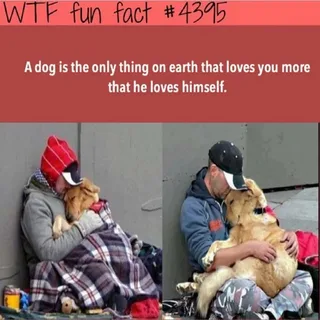
As the seasons changed and years passed, Jack and Buddy’s story began to spread. News of their unwavering bond traveled through the city, resonating with the hearts of compassionate individuals who were moved by their plight. Communities came together, offering support in various forms – warm meals, blankets, and, most importantly, a glimmer of hope. Their tale became a symbol of resilience, teaching people that love knows no bounds, transcending social status, and reminding us all of the simple, yet profound, joy that a loyal companion can bring.
One winter, as the city was blanketed in snow, a local shelter took notice of Jack and Buddy’s story. Touched by their unwavering companionship, they offered Jack a place to stay, a warm bed, and a fresh start. Jack was hesitant at first, reluctant to leave the only life he knew, but he realized that this opportunity could provide a better future not just for him but also for Buddy.
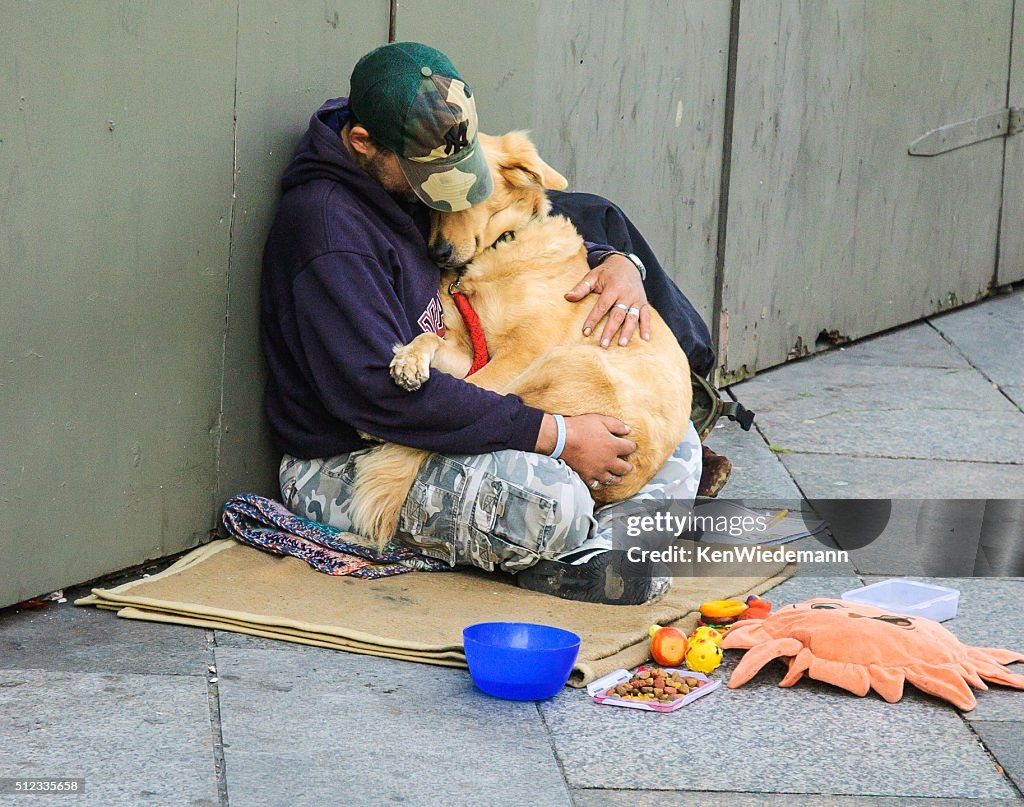
The transition from the streets to a shelter was not without its challenges. Jack, unused to the structured environment, struggled to adapt. Yet, through it all, Buddy remained his steadfast anchor, his furry confidant who provided comfort in the face of change. With the support of the shelter’s dedicated staff and volunteers, Jack began to rebuild his life. He attended counseling sessions, acquired new skills, and slowly regained his confidence.
Buddy, too, flourished in this new environment. He became a beloved presence within the shelter, bringing smiles to the faces of residents and staff alike. His wagging tail and playful antics served as a reminder of the transformative power of love, inspiring others to adopt pets and foster the same bond that he shared with Jack.
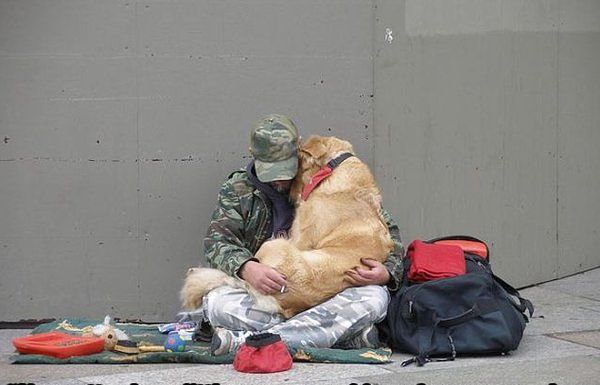
The tale of Jack and Buddy reached far beyond the confines of the shelter and the city. News outlets picked up their story, and soon, they became a symbol of hope for the homeless community worldwide. Donations poured in to support shelters and organizations dedicated to helping both people and their pets, reinforcing the idea that no one should ever be without a home, human or otherwise.
Their journey was not without its challenges, but it was a testament to the enduring power of love, friendship, and second chances. Jack and Buddy’s story became a beacon of hope, illuminating the darkest corners of society and reminding us all that compassion and empathy can transform lives.

As the years passed, Jack found stable employment and eventually secured a modest home. Buddy, now a senior dog, continued to be his faithful companion, reminding him daily of the resilience they shared and the unwavering bond that had stood the test of time. Together, they visited schools and shelters, sharing their story and inspiring others to never lose hope, no matter how dire their circumstances might seem.
In the end, the tale of Jack and Buddy became more than just a story; it became a legacy, a reminder etched into the hearts of millions, urging them to see the humanity in every individual, regardless of their situation. Their journey served as a powerful testament to the enduring strength of the human spirit and the extraordinary capacity of animals to bring comfort, joy, and love into our lives.
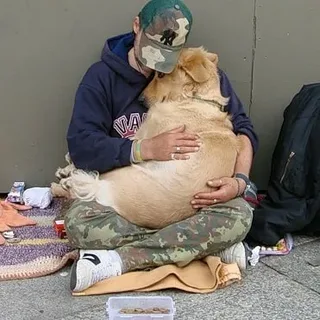
And so, in the quiet moments of reflection, as Jack looked into Buddy’s loyal eyes, he knew that their story was not just their own – it was a beacon of light that had shone brightly, guiding others out of the darkness and into the embrace of compassion, understanding, and love. Together, they had taught the world that even in the face of adversity, the bond between a man and his dog could ignite a spark of hope, illuminating the path toward a brighter, more compassionate future for all.

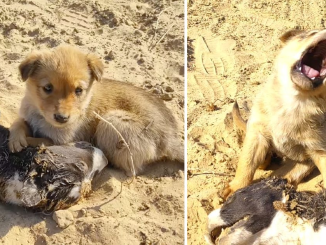

Leave a Reply